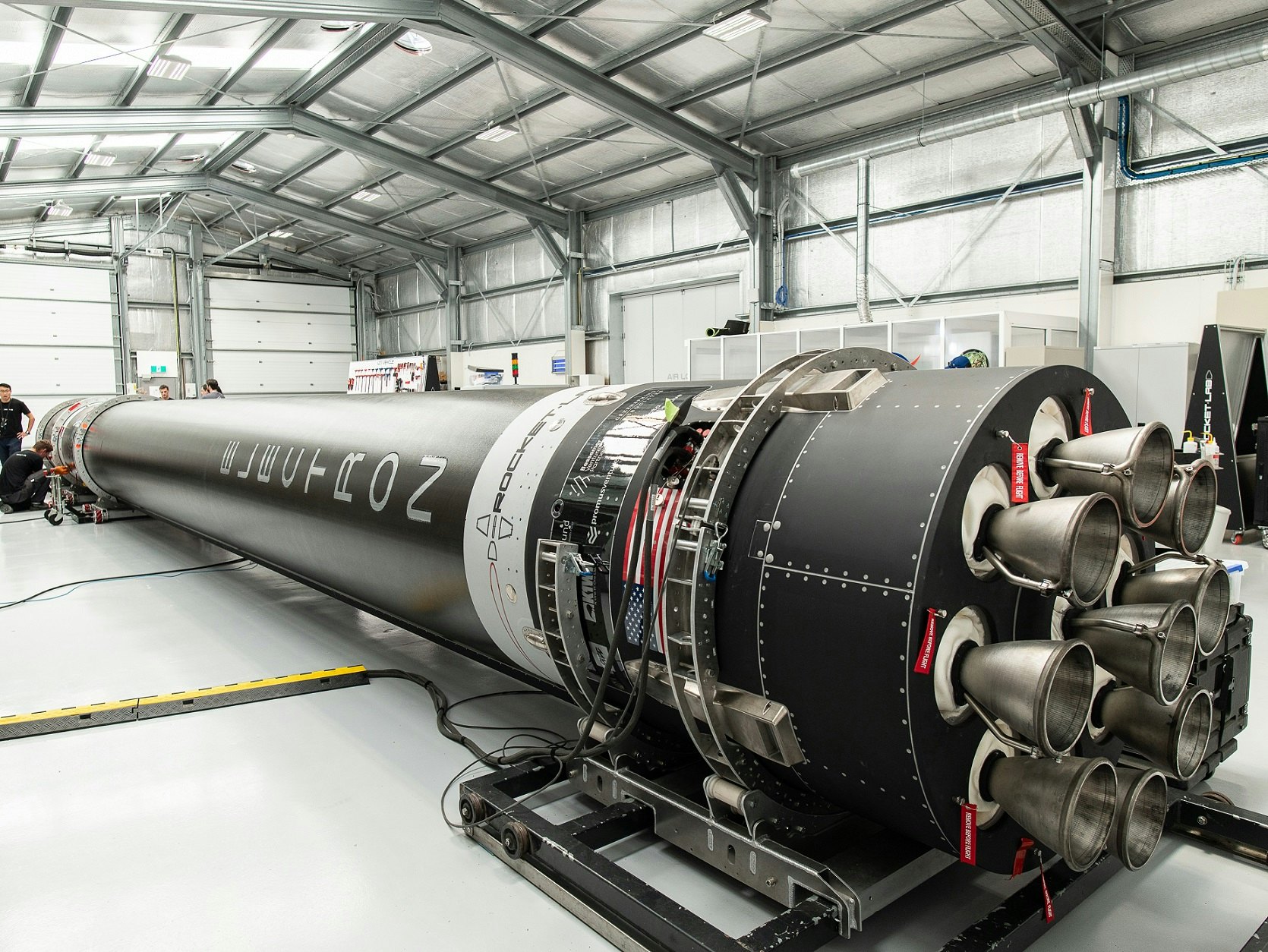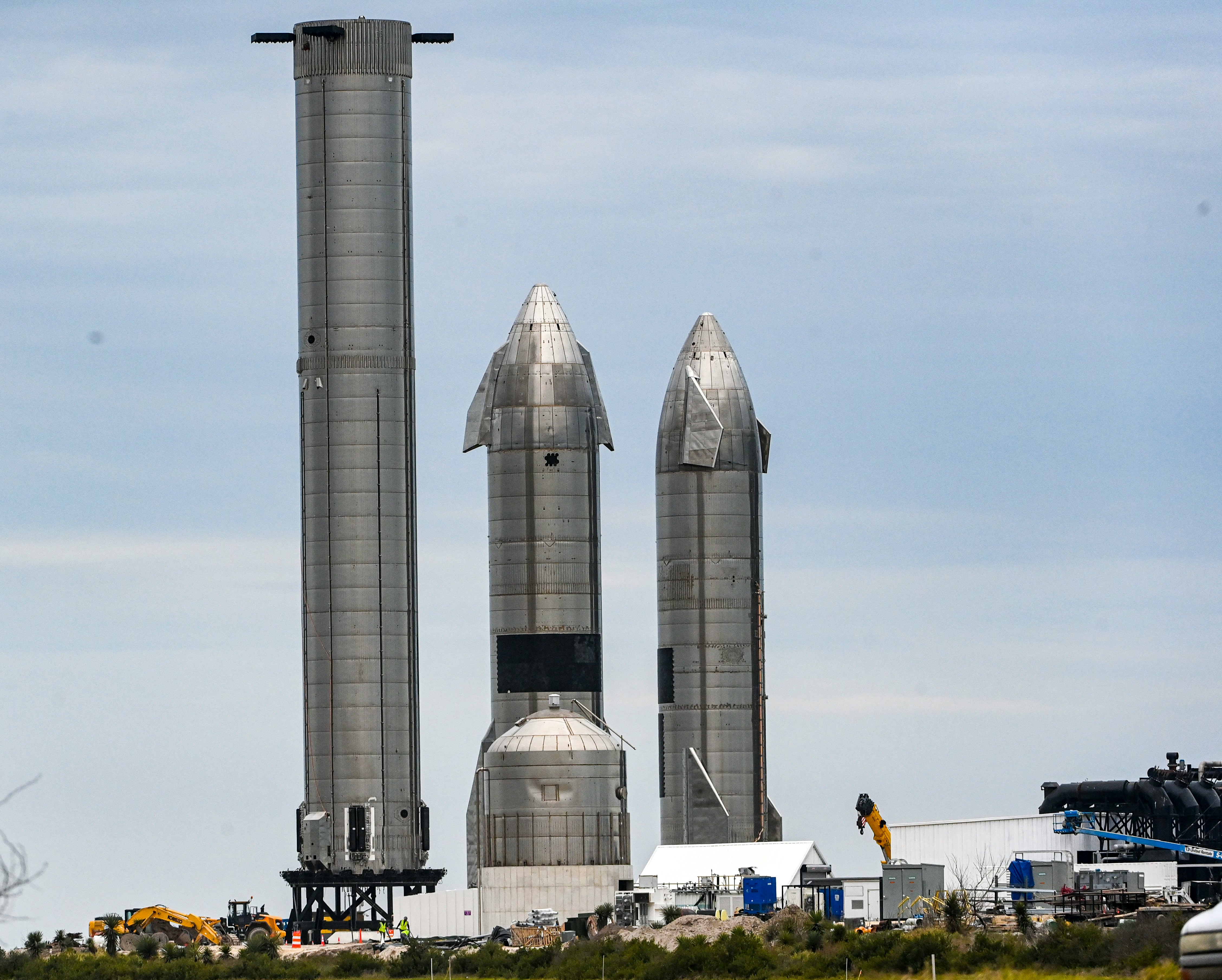
If you hitch a ride to space this year — that is, if you have $60 million lying around — chances are that you’ll be lifting off onboard a SpaceX Falcon 9. This year, Elon Musk’s company is on target for multiple orbital launches. That puts it eons ahead of any competitor.
But this lead may not last, at least if Rocket Lab has anything to do with it. Founded in 2006 by New Zealand-based entrepreneur Peter Beck, the aerospace manufacturer and launch service has also reached orbit, having successfully launched 26 of its own “Electron” vehicles. Rocket Lab has also delivered small satellites to space.
Now, it has set its sights on what comes next: First revealed in a launch video last December, the medium-lift rocket that Rocket Lab calls Neutron is intended to deploy satellites, resupply cargo, and zip between planets.
Rocket Lab designed Neutron to be fully reusable, despite the fact that Beck had previously claimed his company would “never” build a reusable rocket. He told Reddit in 2018 that “reusability doesn’t scale well for small rockets.” Now, he’s reneging on that promise.

To this end, the company broke ground on a new headquarters for Neutron development earlier this year at NASA’s Wallops flight facility in Virginia. The clock is now ticking to 2024, when the company has said that it wants to reach orbit with the new reusable rocket.
Rocket Lab isn’t alone in its shift toward reusable spacecraft — the feature is fast becoming an industry standard. After retrofitting Falcon 9 and pioneering the idea of reusable rockets, SpaceX is now developing Starship, a single-stage, reusable heavy-lift rocket in Boca Chica, Texas.
And Jeff Bezos’ Blue Origin has developed New Shepard, a suborbital rocket, and is currently working on New Glenn, a medium-lift vehicle, both of which have reusable first stages.
Cutting down on space junk
The move toward reusable rockets could be good for all of us down on Earth, too, since the space industry is notoriously wasteful. For instance, many mission launch vehicles contain parts that are dumped into the sky. These barrel down toward Earth and can plop anywhere from the Indian Ocean to an Australian sheep farm.
Each new discarded satellite or rocket component left up in orbit quickly becomes a hazard that other spacecraft need to avoid. There are more than 27,000 such objects being tracked by the Department of Defense.
“Neutron is a reusable launch vehicle from day one.”
Despite the need for more sustainable vehicles, engineering them for reuse has always posed a particular challenge. The 1981 Space Shuttle, the first-ever reusable spacecraft, required significant work for each launch, and many components, including engines and tiles, had to be replaced each time.
And as SpaceX and Rocket Lab have learned from past trials, getting a spacecraft back in one piece is a particular challenge.

But if reuse can be achieved and companies no longer need to build as many components, space travel could become far more economical. That’s partly how Blue Origin and SpaceX have managed to sell flights to space tourists and launch rockets at much greater volumes. But this wasn’t always the case, particularly given the high-maintenance Space Shuttle.
“If you had come to a rocket designer in 2005 and said ‘I want to build a rocket, but I want to give away half of the payload capability in order to reuse it,’ you would get people shaking their heads at you,” says Don Edberg, a professor of aerospace engineering at California State Polytechnic University and the author of Design of Rockets and Space Launch Vehicles.
“But now they realize that it’s a kind of a thing where the payload is less, but you make up for it in volume because it’s so inexpensive to operate.”
How reusable rockets compare
A focus on reuse — and an aim to turn the rocket around and relaunch it all within 24 hours — has informed all of Rocket Lab’s design choices.
For example, unlike Falcon 9, the Neutron nose cone that encloses the rocket’s payload to keep it safe (the fairing) won’t be ditched into the ocean after launch, fortunately for sea-dwelling creatures. Instead, it will remain attached to the rocket, popping open to release the space cargo. The liquid oxygen/methane engine is also built to last multiple missions.
But at a planned height of 131 feet and a diameter of around 23 feet, Neutron will be roughly comparable in size and scope to the SpaceX Falcon 9.
In terms of payload, it should be able to deliver 9 tons’ worth of items to low Earth orbit in reusable mode — or as much as 14 tons if the rocket doesn’t need to return home.

While that’s less than the 27 tons the Falcon 9 can haul, the company believes that because of its design, it will be better placed to compete with SpaceX on price.
“I think the big difference to remember is that a Falcon 9 was an expendable launch vehicle that was made reusable, [whereas] Neutron is a reusable launch vehicle from day one,” says Beck.
Beck has previously described rockets as a “giant engineering compromise” because every characteristic of a launch vehicle is effectively a trade-off in terms of functionality and performance. So what’s the trade-off with a reusable rocket?
“We know how to control a long skinny pipe re-entering the Earth’s atmosphere, and we can target it very, very accurately.”
“If you eject your fairings and throw them away, then that’s mass that you don’t necessarily have to carry,” Beck says. But he believes he has squared the circle by building the rocket’s shell not out of steel like the Falcon 9, but out of a much pricier (and newer) carbon-composite material that’s four times lighter.
Rehauling the fairing design is a gamble since it’s the least tested aspect of the new vehicle. It isn’t yet clear how Rocket Lab will perfect the re-entry into the atmosphere.
A critical catch
Neutron might be specifically designed for reuse, but Rocket Lab is still working out how exactly it’ll recover a rocket that’s hurtling back to Earth. Since early 2020, the company has retrieved four first-stage boosters from Electron launches.
Three landed at sea, and this past May, the fourth attempt was ripped from a blockbuster movie: A helicopter caught it midair as it descended. None have yet returned to space in a second launch, but the recovery attempts are providing useful information nonetheless.
“We spent a lot of time on the reusability program with Electron, so we’ve learned a lot of those lessons,” Beck says. “We know how to control a long skinny pipe re-entering the Earth’s atmosphere, and we can target it very, very accurately.”
This will be useful for Neutron, which is intended to return to its launch site at NASA’s Wallops Flight Facility in Virginia. It will land on built-in fixed landing legs, which the rocket’s conical design is optimized for.
“A lot of people see us snagging the rocket with the helicopter and think that’s the hardest bit,” says Beck. “The hardest bit is getting the rocket to exactly where you intended to be after it’s been traveling at seven times the speed of sound.”
Gauging the competition
There is, however, a huge elephant in the room (or, should we say, in space). When Neutron takes flight in 2024, it won’t just be competing with Falcon 9 for business.
By then, SpaceX’s new, even bigger beast may have entered regular service. Starship, if Musk is to be believed, will be capable of hauling more than 110 tons into low Earth orbit, all in a single-stage launch. So in a world where Starship exists, will there be any room left for Neutron?
“If you want to go to Mars and populate Mars, you need a Starship. That’s the perfect vehicle for doing the job,” Beck says. But for most other purposes, it’s overkill.
“You can do a lot of testing on the ground, but ultimately, you have to fly.”
You can compare the situation to flying with an A380 with 10 people on board: Such an enormous plane could only travel between airports with huge runways, while a vehicle like a Dreamliner is small enough to arrive directly at many more destinations. In the same vein, the smaller Neutron could deliver satellites closer to their specific orbits.
As things currently stand, Neutron is slated to shoot into orbit in 2024. In the more immediate future, the company has promised investors and onlookers a more fully-fledged update later in September.
But whatever happens, we won’t know for sure if Neutron is a success until the rocket takes off — and flies back home again.
“You can do a lot of testing on the ground, but ultimately, you have to fly,” says Beck.







